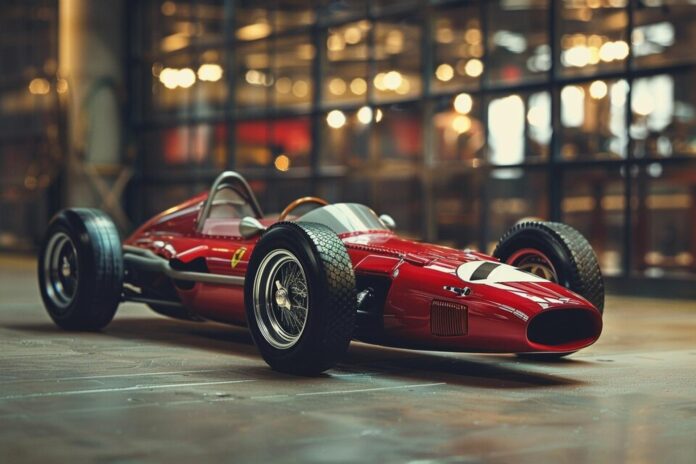Classic Machines: The Golden Age Of Racing
The golden era of racing recalls a period when fans loved speed and grace. A generation was shaped by engine noise and rivalry. The Ford GT40 and Ferrari 250 GTO were racing legends. Each model was acclaimed for its power and artistry. Automobile makers invested in artworks. All racing events changed the globe. The legacy of this golden period is important.
Racing was more than a sport then. It showed technical advances. Every race competed for dominance. Teams pushed limits to excel. Competition between producers spurred innovation. Cars became emblems of speed and elegance. Driving idols were Jim Clark and Jackie Stewart. Their cars were quick and stylish. Performance and aesthetics left lasting memories. These automobiles are still collectable. Each model’s tale is passionate and ambitious.
Racetracks for these machines were sacred. They saw racing fans‘ favorite moments. The boldness of drivers attracted onlookers. As machines raced around corners, spectators applauded. Pit stops increased enthusiasm. Teams rushed to deliver. Racing flourished then. It paved motorsport’s future. Golden age legacy persists. It motivates future drivers and engineers. Fans still love classic computers. Their appeal reminds us of racing’s enchantment.
From Formula To Rally: Diverse Racing Genres
Racing has several genres. Each kind has distinct difficulties and delights. Diversity dominates motorsport, from Formula One perfection to rally racing roughness. Every genre has devoted fans. Fans and participants like the variety. Track racing emphasizes speed and ability. Drivers navigate turns for victory. A surge of adrenaline is felt.
Rallying differs greatly from track racing over uncertain terrain. Teams confront gravel, snow, and hazardous routes. Rally drivers must adjust rapidly. They’re resilient in numerous situations. Drivers and co-drivers must cooperate. Communicating helps manage issues. Each woodland stage or mountain crossing has fresh challenges. The unmatched joy of conquering such routes.
More diverse racing disciplines include touring vehicles and endurance racing. Custom automobiles race on confined circuits like touring cars. Speed and durability are tested in endurance racing. Teams plan to do well. Shifts emphasize collaboration for drivers.
Each genre enriches motorsport. Everyone celebrates speed and competitiveness. Fans like every racing form’s uniqueness. The thrill is consistent across genres. Racers and spectators are driven by enthusiasm on racetracks and difficult paths. Racing has something for everyone. New speed and adventure fans join it as it evolves.
Innovations On Wheels: Technological Breakthroughs
Racing relies on technology. Innovations changed the sport throughout time. Engineers and designers strive to improve performance. New materials and designs make automobiles lighter and quicker. Research centered on aerodynamics. Airflow was manipulated by engineers for speed. Wind tunnels permitted considerable pre-race testing.
Racing dynamics have evolved with electronics. Advanced timing systems offer precise data. Teams may evaluate performance live. This helps with race decisions. Communication technology has advanced. Better than ever, teams coordinate strategy. Drivers can communicate easily throughout races.
Now, hybrid technology is revolutionary. Electric power complements engines in manufacturing. This method combines speed and sustainability. Teams strive for efficiency without losing performance. Artificial intelligence integration is rising. Data analysis and predictive modeling are done by engineers using AI. This permits informed vehicle setup changes.
Also, safety aspects have improved. Crash structures improve driving safety. Safety gear has advanced. Helmets and suits reduce accident injuries. These innovations inspire drivers to experiment. Performance upgrades fuel the race for speed. Every technological advancement changes sports. Racing evolves with new technologies. Racing’s future looks bright with advances.
Design And Performance: Aesthetic Legends
Racing design is art. Every line, curve, and color counts. Fans and collectors like aesthetics. Iconic automobiles are memorable. Beauty is associated with Ferrari and Lamborghini. Their creations inspire and move. Racing cars are useful and beautiful.
Race cars‘ attractiveness frequently mirrors their performance. Engineers design for purpose. The wind tunnel tests form‘ aerodynamic efficiency. Fast-looking cars do well. Esthetics govern this creative process. Due to their beauty, many automobiles are legends.
Designers and engineers must collaborate. They create gorgeous and practical cars together. Famous automobile designers have shaped racing. Clearly, Pininfarina and Giugiaro contributed. Their innovative designs transformed racing.
These artistic marvels grace iconic racing events. Design attractiveness is often shown during car events. Classic models are admired for their workmanship. Design-performance relationships change. As technology progresses, aesthetics must be considered. More than machinery, cars have become everlasting art.
The Evolution Of Aerodynamics In Racing
Racing is heavily influenced by aerodynamics. Vehicle form and design affect speed and stability. Racing automobiles were basic early on. Competition increased the demand for speed. Engineers refined forms to reduce drag. Motorsport entered a new era.
Aerodynamics became important in the 1960s. Jim Hall revolutionized design. A fan system increased downforce on the Chaparral 2J. This invention challenged design. Aerodynamics became popular among teams. The focus switched from power to balance.
The advent of wind tunnels changed testing. Engineers might study automobile airflow. This caused exact changes. Cars were sculpted for speed. The late 1970s saw the “ground effect” develop. This design enabled automobiles to generate downforce without wings. Design improvements came from constant innovation.
Aero packages are vital in racing rules nowadays. CFD helps engineers analyze. Design becomes more efficient and precise. Teams intensively develop aerodynamics. These innovations push performance limits. Motorsport development revolves around aerodynamics. It influences racing’s future. Understanding this is crucial for track success.
What Are The Key Elements That Defined The Golden Age Of Racing?
The golden age of racing had numerous hallmarks. Iconic machines dominated the tracks. Legendary cars included the Ferrari 250 GTO and Ford GT40. The drivers were brave and skilled. Events like races were exciting. They captivated millions. Team rivalry boosted performance. This era boosted technology and design. Many inventions came from this time. The love of speed developed a lasting culture. Fans cherish racing’s golden period. Its legacy inspires new generations.



















